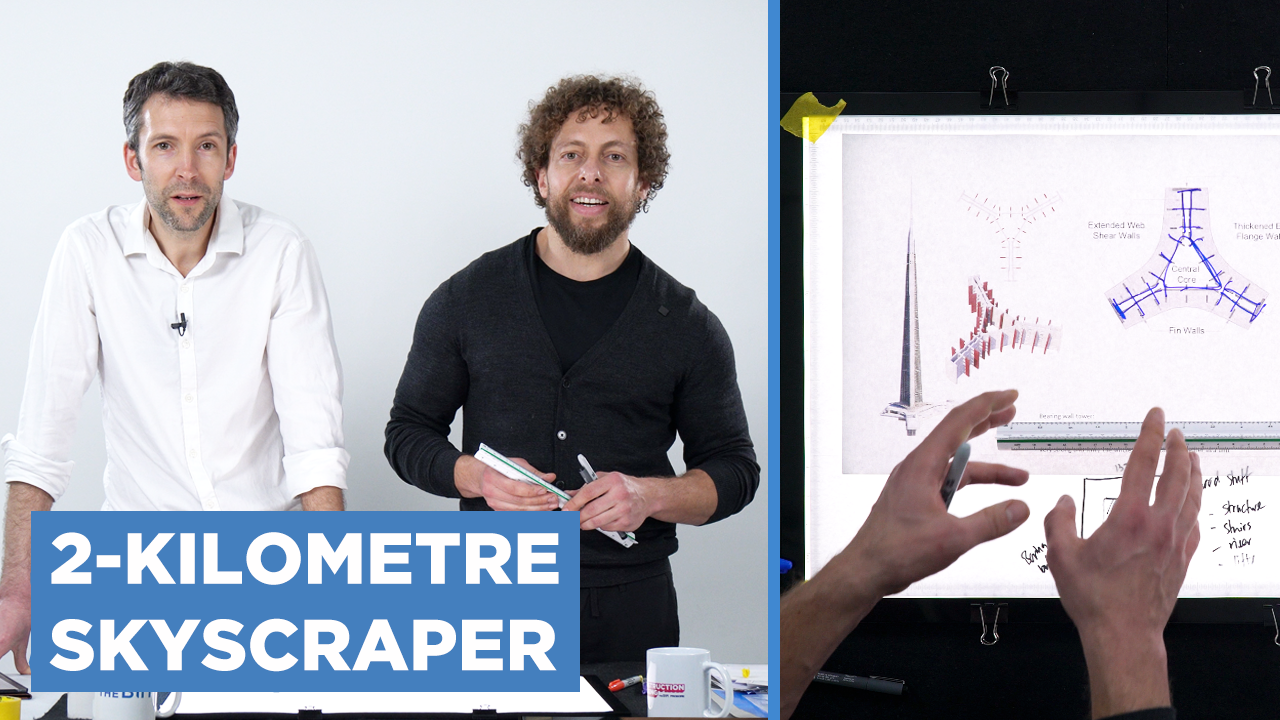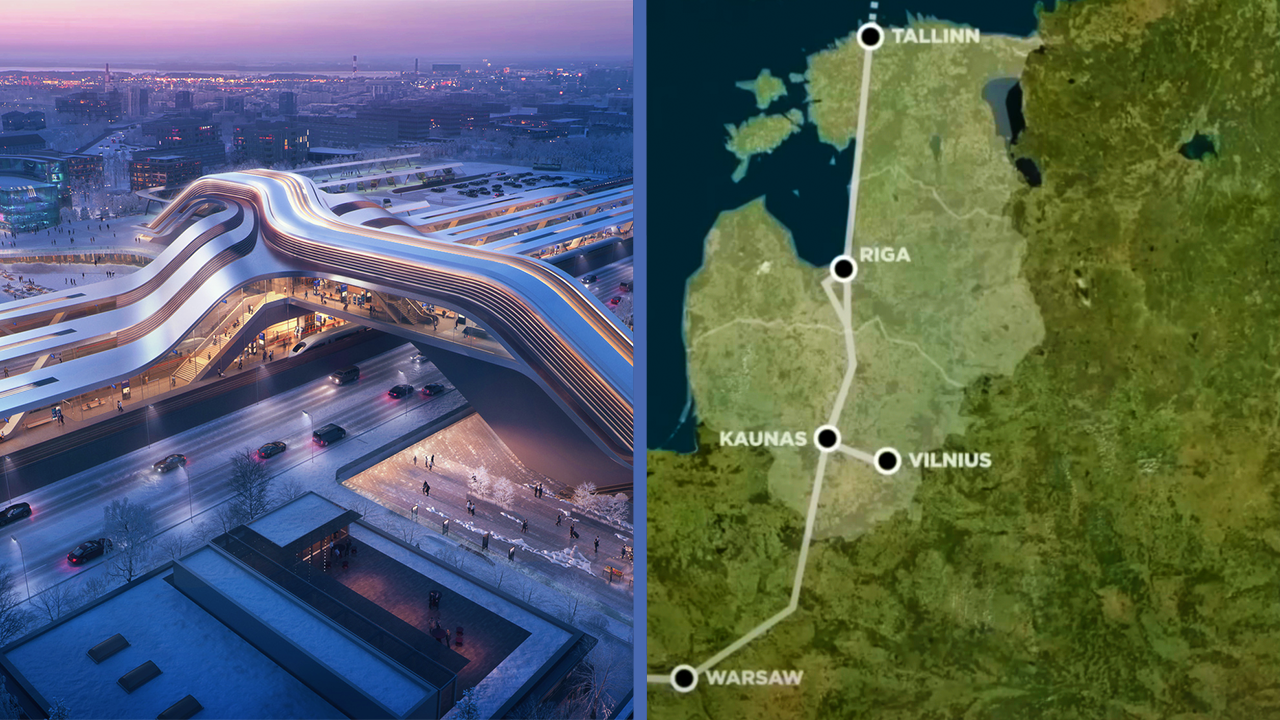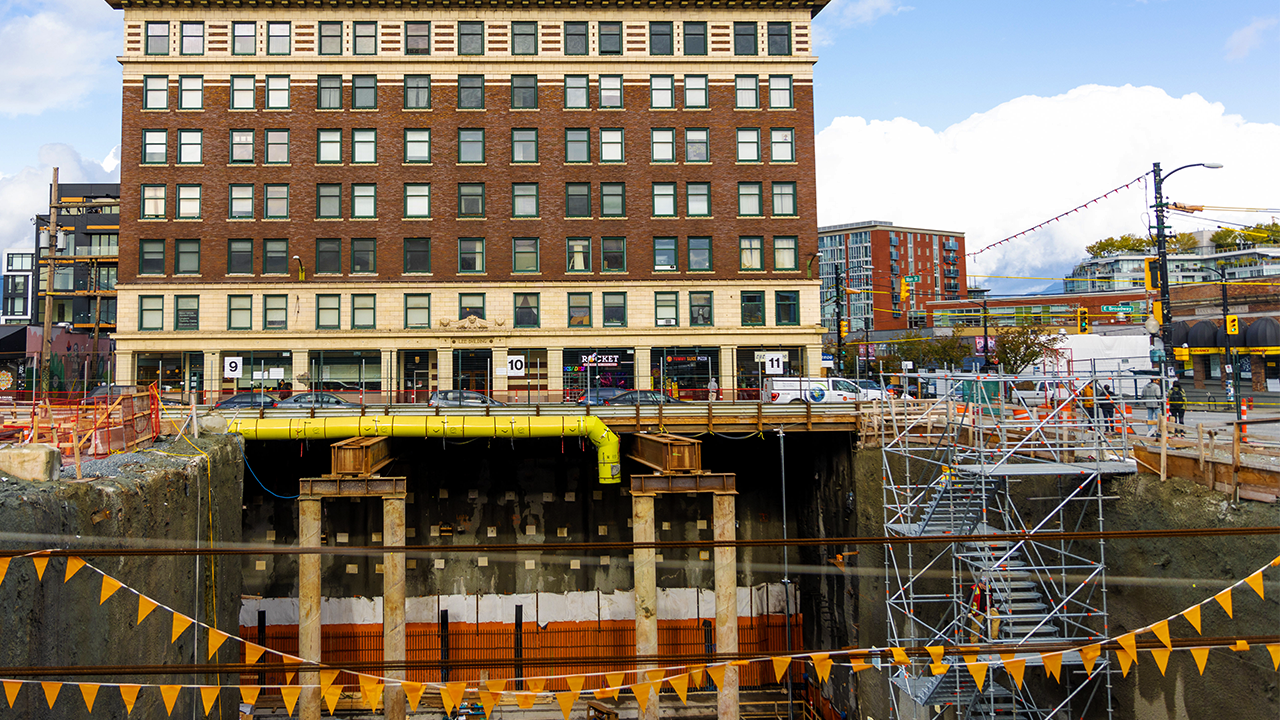The $2BN Megaproject Under Vancouver
- Youtube Views 887,537 VIDEO VIEWS
Video hosted by Fred Mills. This video contains paid promotion for Brilliant.
THERE'S a huge underground infrastructure project happening in Canada that’s set to transform one of its largest cities.
As Vancouver prepares for a population boom in the coming years, midway through a housing crisis, a $2BN new subway line is in progress.
When complete, it’ll kick-start a massive urban development plan — a whole new downtown — and construction teams are going to extreme lengths to get it done.
From challenging tunnel bores to building new stations along one of the city’s busiest streets, this particular megaproject demands some truly ground-breaking engineering.
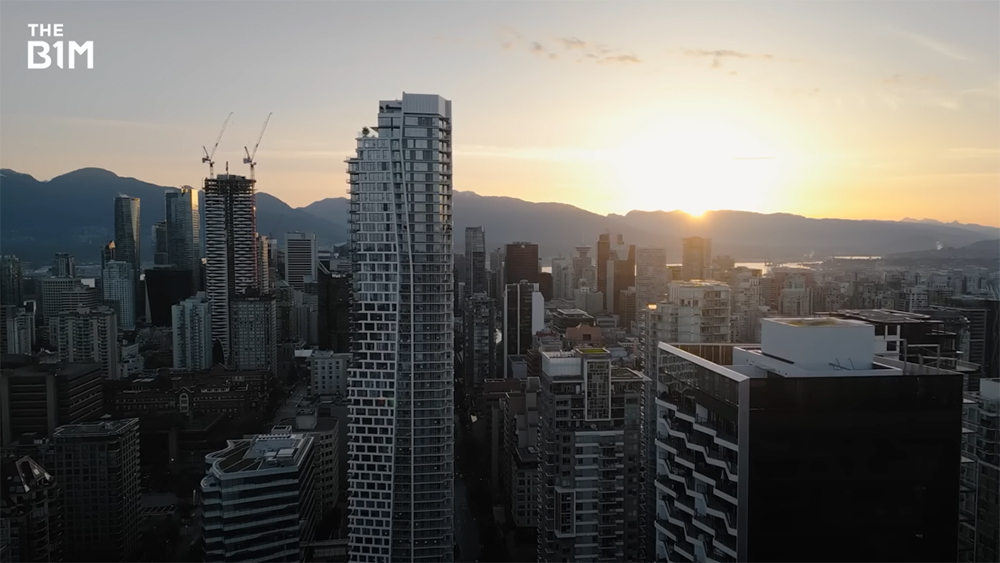
Above: The population of Vancouver is expected to grow substantially over the new few decades.
It’s been named one of the world’s most liveable cities — Vancouver, Canada. Why? Well, for one thing, you just need to look at it.
Surrounded by mountains, the ocean and stunning urban parks, if you like a city with a bit of scenery then this is for you. But if you want to make a home here and you’re not blessed with deep pockets, good luck finding a property right now.
Yes, a liveable city without enough places to live. And that’s without the million extra people expected to be here by 2050, requiring half a million more homes and jobs.
Corridor of power
The Broadway Corridor is the second-largest employment area in British Columbia, but housing is mostly low-density and there’s not enough office space to meet demand.
So the provincial government is planning to make this section of the city a whole lot taller, adding tens of thousands of new homes and jobs across nearly 500 blocks.
But first they need to finish building the incredible construction project that’s now making headway beneath the surface — the new Broadway Subway.
Set to cost CAD $2.8BN — or USD $2.1BN — it’s a major extension of the SkyTrain light rail system, which has been in operation since the mid-1980s.
When complete, it won’t just ease pressure on the overcrowded bus network that many people use to get around. It’ll also act as the catalyst for all the high-rise construction above ground. Yes, none of it will happen until the subway is up and running.
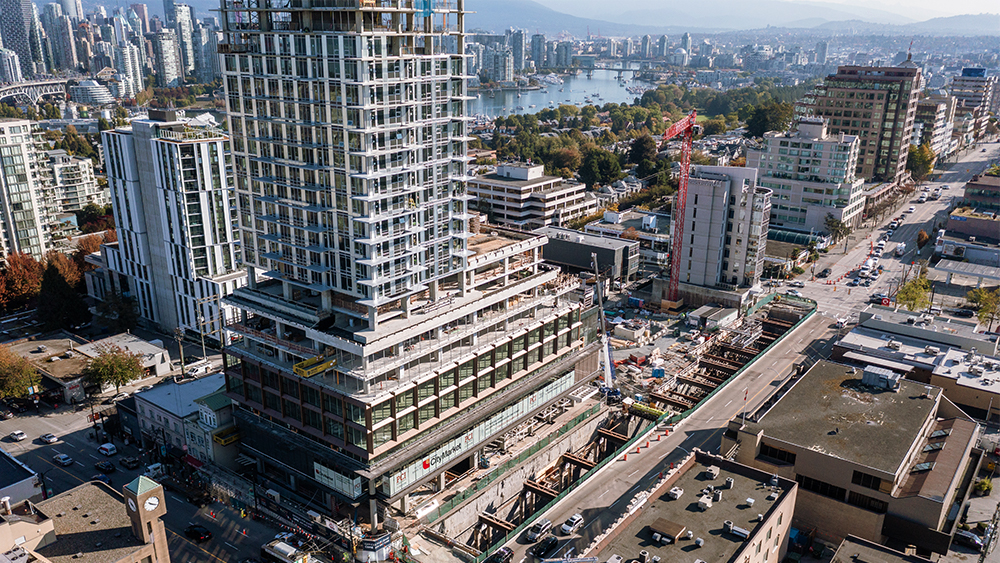
Above: Vancouver's new Broadway Subway under construction. Image courtesy of B.C. Ministry of Transportation and Infrastructure.
So, what are the details of this project? Well, it consists of six new underground stations, five kilometres of twin-bored tunnels and an elevated guideway — or viaduct — joining the new line to the existing infrastructure.
That 700-metre new connection is made up of 21 pillars and more than 100 concrete beams — each one 30 metres long and weighing almost 40 tonnes.
Following completion, the guideway will take passengers from VCC-Clark — where the Millennium Line currently terminates above ground — to the first new underground station at Great Northern Way. After that, trains will continue their journey in a tunnel, and digging those has required some seriously heavy machinery.
The boring stuff
150 metres in length, with six-metre diameters, a pair of tunnel boring machines — or TBMs — called Phyllis and Elsie have been handling the excavation.
These TBMs were made in Germany and shipped to Canada in various parts — stopping off at five other countries on the way — before they were assembled on site.
Tunnelling work began in November 2022 and took almost a year to reach Oak Street, where the fourth station is being built. That’s because digging through hard rock like this can be quite a grind — literally. Once the machine has made the hole it has to place these rings behind it — thousands of them — to make the tunnel lining.
They’re sent through the tunnel using special vehicles before they’re picked up by a crane and placed on a conveyor belt, which takes them up to the machine.
The segments are then arranged in a full ring, which the machine uses to propel itself forward and carry on burrowing, travelling up to 18 metres each day.
At one point, Phyllis had to dig down to a depth of 22 metres. Why? So it can pass underneath the other subway tunnel that runs from north to south in the same area — the Canada Line.
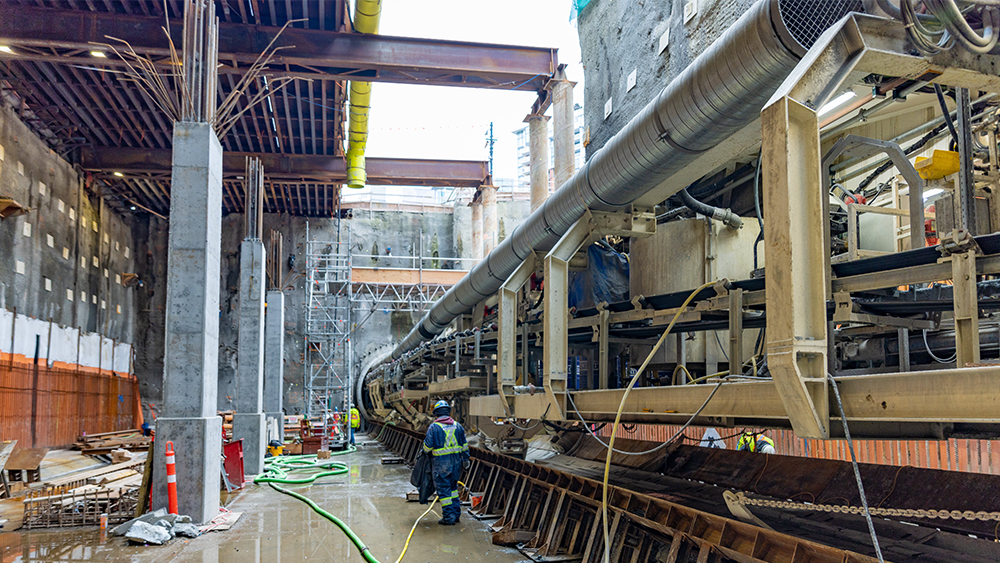
Above: Once both TBMs reach Cypress Street, next to the final station, they will be dismantled and removed. Image courtesy of B.C. Ministry of Transportation and Infrastructure.
It might be taking a long time to dig the holes, but passengers will be moving a lot quicker through them once it’s finished. ACCIONA, one of the two main contractors, claims a journey along the entire new line will take just 11 minutes, saving the average commuter about half an hour each day.
Even so, with all this construction going on just below ground, surely it’s causing a huge disturbance to people right now? Well, not as much as you might think.
To keep traffic flowing, temporary decks are being built along Broadway, ensuring one half of the street is left open to cars and buses throughout. To do this, enormous drills are used to make 20-metre-deep holes for the columns that support the deck.
Next, the road is excavated to create space for the girders and deck panels that form the structure, resting on concrete pads. Then, on goes the deck, followed by the traffic, allowing work to carry on beneath before the process is repeated over on the opposite side.
Dedicated work areas and storage spaces have also been set up next to the station sites. This has required more building demolitions, but it’s another move that’s ensured construction is kept away from Broadway.
The downsides
But that doesn’t mean there have been no negatives. Some businesses in areas like Mount Pleasant have seen a decline in footfall, or shut completely, blaming the construction.
Others tied to the project have also been making a stand, but not against the new subway directly. Over a hundred concrete plant workers went on strike in 2022, affecting the supply of the material across the region. This delayed the start of tunnelling, and pushed back completion of the whole scheme from 2025 to 2026.
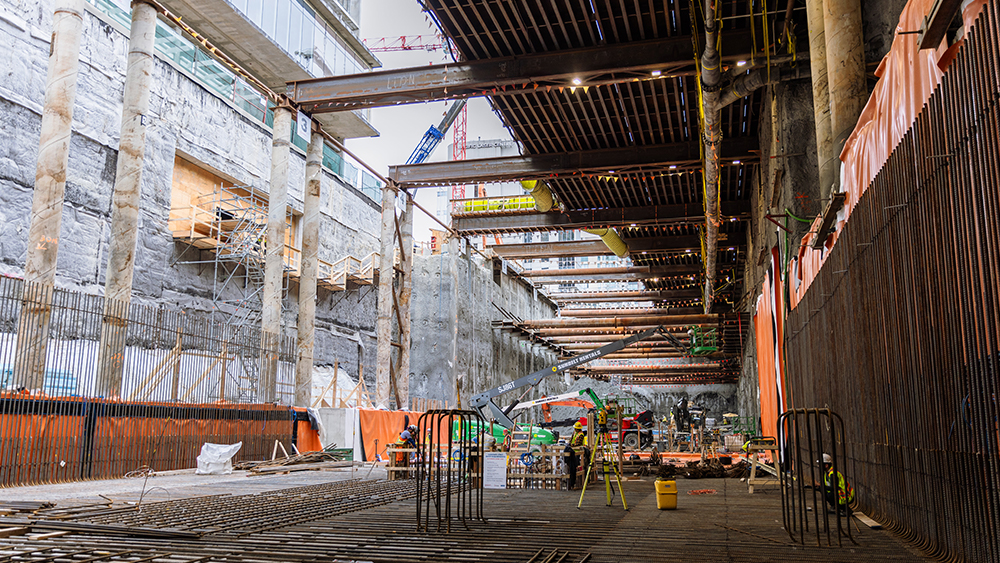
Above: Work has been taking place below temporary traffic decks. Image courtesy of B.C. Ministry of Transportation and Infrastructure.
Once that happens, Vancouverites can expect to see the skyline around Broadway get significantly taller, as construction on the so-called Broadway Plan finally begins. That’s Vancouver’s proposal to build a ‘second downtown’ by replacing many of the low-rise buildings with high-rises.
The result would be more space for homes and businesses, but the effect that would have on people already living and working here has become another contentious subject.
In early 2023, a proposal was put forward to limit the number of renters who would have to leave their homes and make way for new buildings. It was rejected by the city council, over fears it would have slowed down much-needed development.
However, those who do have to leave will be offered another rental at the same rate and get the chance to move back into the new building — again, without having to pay more.
With years still left to go on the subway build, and the Broadway Plan yet to even start, more backlash in the future is perhaps to be expected.
Light at the end of the tunnel
But as we’ve seen with construction projects time and time again, some disruption is kind of inevitable with these sorts of projects, especially when they combine both infrastructure and real estate.
They often prove to be beneficial in the long run — even to those who were impacted along the way. Hopefully, the same will be said again here.
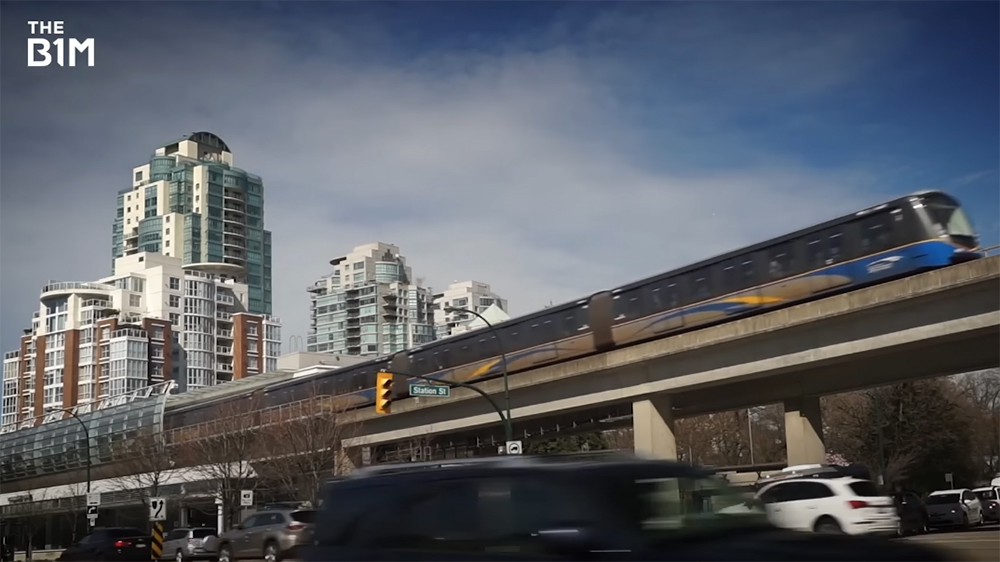
Above: A train on the current SkyTrain network. Image courtesy of Transportation Investment Corporation.
Over the next 30 years, Vancouver’s already bustling Broadway corridor is set to become even busier, and it simply won’t be viable without an efficient transport system in place.
Yes, the new subway might not be universally popular, and not everyone appreciates the awesome engineering going into it. Despite this, it’s a project that could turn Vancouver into a truly liveable city — where you can actually live — for years to come.
This video contains paid promotion for Brilliant. To try everything Brilliant has to offer for free for a full 30 days, visit brilliant.org/TheB1M or click on the link in the description. You’ll also get 20% off an annual premium subscription.
Video narrated by Fred Mills. Additional footage and images courtesy of Transportation Investment Corporation, B.C. Ministry of Transportation and Infrastructure / CC BY-NC-ND 2.0 DEED, City of Vancouver, BNN Bloomberg, CBC Vancouver, CityNews, CTV Vancouver and Dmitry Varennikov.
We welcome you sharing our content to inspire others, but please be nice and play by our rules.
